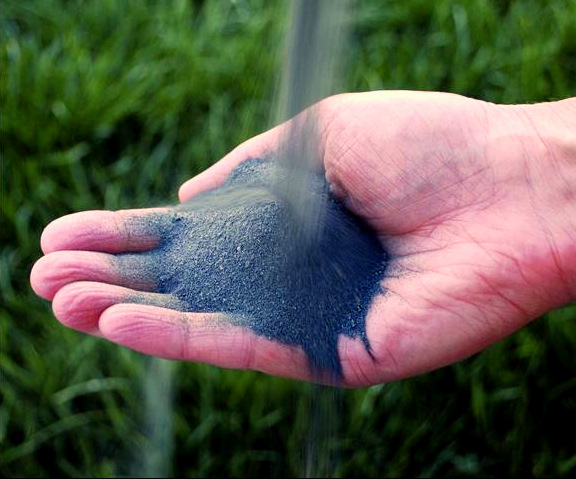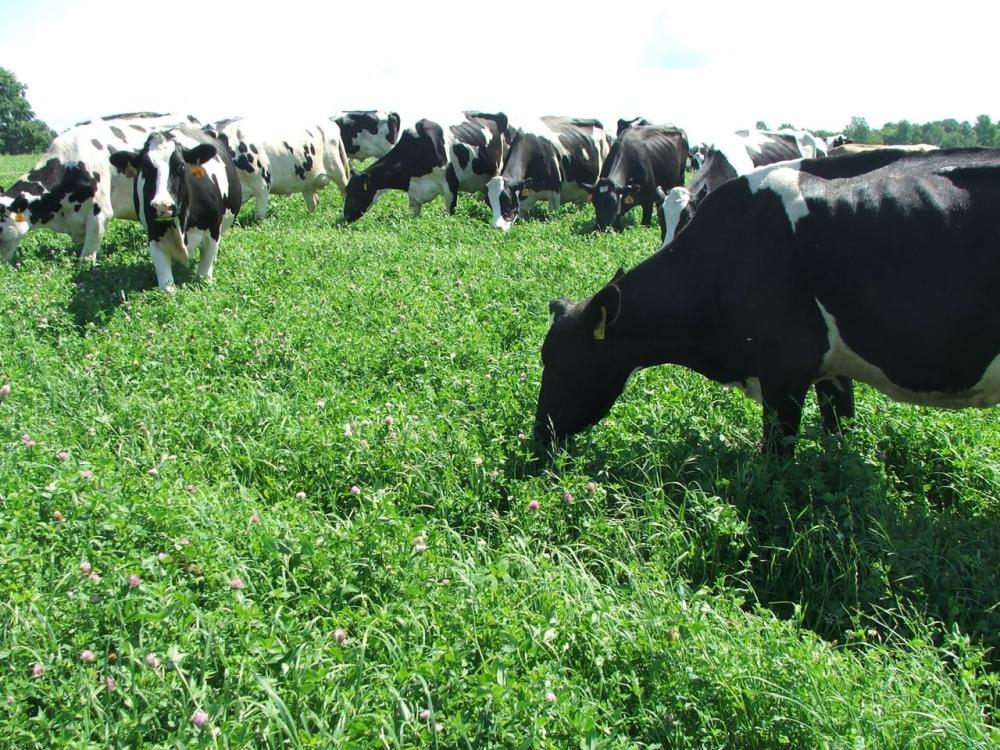Reactive Phosphate Rock based fertilisers
The use of reactive phosphate rock (RPR) as a base for phosphate based fertilisers is well founded in Australia and overseas through numerous independent and replicated trials and studies.
Using a highly reactive, high grade reactive phosphate rock as the base for our fertiliser range provided the greatest benefit to the farmer and delivered the outcomes we wanted to achieve.
The result is a range of natural fertilisers that incorporate high grade raw materials with low levels of contaminants, and deliver sustainable and long term sources of nutrient in an efficient manner.
Why reactive phosphate rock?
There is a big difference between “straight” phosphate rock, and reactive phosphate rock.
Essentially “straight” phosphate rock has a low natural solubility and is unsuitable for direct application as a fertiliser without further processing. We do not use “straight” phosphate rock in our fertilisers.
Reactive phosphate rock is a phosphate rock that meets or exceeds the minimum set standards for solubility, as measured by citric and formic solubility tests.
It is these “reactive” phosphate rock types that have been trialled as direct application fertilisers to great effect.
Some sources of reactive phosphate rock do not meet other standards, such as maximum allowable levels of heavy metal contaminants. The rock we source is not only a highly soluble variety, but also contains well below the maximum allowable limits for contaminants.
More information on RPR
Trial: Reactive Phosphate Rock

To evaluate the effectiveness of reactive phosphate rock (RPR) as a phosphorus fertiliser for pastures in Australia, trials were completed across the major pasture production areas of Australia.
The results of these trials were subsequently published in a book titled The Role of Reactive Rock Phosphate Fertilisers for Pastures in Australia.
Additional funding was then obtained for one of the trial sites at Smithton in Tasmania, and this enabled total dry matter production levels to be measured for an additional 4 years after the last application of phosphorus was applied.
The Smithton site trial compared five different reactive phosphate rocks (RPR) and single super phosphate (SSP), applied at four different application rates. The application rates were 0, 17, 34 & 68 kg/ha of phosphorus, with 17kg/ha of phosphorus simulating an annual application rate, whereas the 34 and 68 kg/ha of phosphorus simulated a capital application rate.
The site was planted to white clover, sub clover, strawberry clover, perennial ryegrass & tall fescue.

In each year, the highly reactive phosphate rocks out performed SSP at an application rate of 17kg/ha of phosphate, particularly in the first two years after the applications had ceased.
The 68kg/ha of phosphate treatment had variable results for the first four years of the trial and the difference between the two product types was not significant.
What is significant is the change in dry matter production after the application of phosphorus ceased in 1995.
It is well understood that superphosphate suffers from leaching and locking-up. This restriction on phosphorus availability resulted in the reduced yield of dry matter.
Conversely, RPR continued to produce dry matter in the years after any fertiliser was applied.
The graph included illustrates the results.
What’s the take home message?
If you produce pasture in an environment similar to this an RPR based product (like BioAgPhos) will provide a production buffer during the years when phosphate is not applied, whether that’s due to environmental conditions, poor commodity pricing, spreader availability or a shortage of available funds.
It is for this reason that a BioAg program that utilises BioAgPhos will generally include an application once every two years.
As well as having a higher amount of P/kg of product, spreading BioAgPhos along with your other inputs ends up providing some very nice savings of both time and money.
Rock Phosphate and superphosphate as sources of phosphorus for subterranean clover on an acid sandy soil

Rock Phosphate and superphosphate as sources of phosphorus
for subterranean clover on an acid sandy soil
Waite Agricultural Research Institute
Glen Osmond, SA
Trial location: Mount Compass (SA)Randomised block with 4 replications.
- RPR & SSP applied at 4 different rates.
- P applied autumn of the first year only.
- Dry matter yield measured Oct/Nov annually.
- Soil P levels evaluated annually post-harvest.
Reactive Phosphate Rock Evaluation – Agronomy Field Trials
Agronomy Field Trials
Reactive Phosphate Rock Evaluation (Published 1996)
Kangaroo Island, South Australia
The role of reactive rock phosphate fertilisers in Australia
When is the best time to buy phosphate fertilisers?
The correct answer is when soil tests reveal your P levels are too low.
But let’s talk about the supply of phosphate fertilisers to and within Australia. On the supply side of the industry we see wild fluctuations in demand depending on seasonal conditions and farmers’ terms of trade.
The 2012-13 summer and autumn fertiliser season was a particularly bad season for Australian fertiliser suppliers for a number of reasons: Global economic uncertainty; Australian political uncertainty; declining farmers’ terms of trade (with meat, wool and dairy prices all falling); a late autumn break in many areas and the list goes on.
So what will happen to Australian phosphate fertiliser prices this coming autumn?
From a global market perspective the Australian market can expect attractive phosphate fertiliser pricing because the international market is right on the bottom of its cycle.
This has occurred for a number of reasons and relates primarily to the state of the international DAP market.
Prices are depressed due to less demand from India where reduced Government subsidies, a reduction in the maximum retail pricing (set by the Indian government), and a free-fall in the Indian Rupee, have all contributed to lower prices to attract Indian buying.
At the same time increased capacity in Saudi Arabia, and China’s need to export has driven DAP prices down close to manufactured cost levels.
In short, this means that Phosphate fertiliser prices are likely to be at their most affordable this summer and autumn.
If you are looking to build soil P and in turn fertility levels this season, you can take advantage of the low fertiliser prices by buying now.
“Super” and Reactive Phosphate Rock
Essentially superphosphate or “super” is a fertiliser processed using sulphuric acid to boost water solubility of phosphorus. Various strengths of P plus additions of nitrogen make up a range of products that have among their features a high proportion of nutrients in a form that is readily available for uptake by plants.
Like the familiar “super”, reactive phosphate rock (RPR) originates from natural deposits. The source is more specific, however, namely deposits formed on the sea floor through gradual absorption of phosphate present in seawater into dead sea organisms.
Another difference is that it does not go through the same processing as superphosphate to boost water solubility and the release of P is more gradual.
Solubility is determined by laboratory testing using the citric acid test, hence the term “citrate soluble”, and other tests determine critical element content. For example, BioAgPhos has a high level of citrate soluble P (37%) and sourcing Algerian product ensures the lowest possible levels of cadmium.
Apart from laboratory analyses, trials clarify performance. Among these has been a CSIRO study showing reactive phosphate rock can out-perform superphosphate for pasture production.
Importantly, primary producers are finding a key role for reactive phosphate rock because of the manner of release of P. The BioAgPhos form of reactive phosphate rock, for instance, has a third of its P immediately available with the balance released over time.
BioAg fertilisers nutrient content at a glance (%)
| BioAg Fertiliser | N | P | K | S | Ca | Mg |
| BioAgPhos | 0 | 12.7 | 0 | 1 | 35 | |
| BioAgPhos S10 | 0 | 11.5 | 0 | 10 | 32 | |
| BioAg Superb | 0 | 9 | 0 | 7 | 31 | |
| MagPhos | 0 | 8 | 0 | 1 | 25 | 8 |
| Pasture Primo | 0 | 4 | 0 | 0 | 39 | |
| PotPhos | 0 | 10 | 11 | 5 | 27 | |
| BioAg SOA | 21 | 0 | 0 | 24 | 0 | |
| BioAgSOP | 0 | 41.5 | 0 | 18 | 0 |
